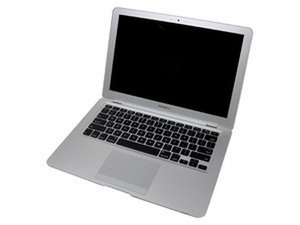Ok, I don't consider myself to be a newbie at this by any means... but I've run into a road block.
Instead of starting a new thread on the same question, I will piggyback on this one...since it's the same software issue.
I have a 2008 MBP A1260 with 4GB of RAM. I was running 10.9 with no issues.
Backstory: One day, no sure why... I got a fuzzy/static look upon startup. This is similar to what I've seen with water damaged machines...
I opened the machine to inspect and dry... no visible signs of liquids or charring.
I was unable to start up normally but was able to get in via LauchDaemons in Single User Mode.
I ran many many fsck -y in single user mode to get it to only 2 files and directories that were out of order. This only worked for a few days before I got an error that ran continuously until the power was pulled saying that there was a run time error and that fsck should be run on next boot. This happened the day before my new HD arrived. I was planning on installing the OS on there and booting from that and performing a clean install.
It wouldn't have mattered... the USB ports are not recognizing the external as a HD. It will charge the drive and cell phones...but will not show up in DU as an external.
Because I was booting from the HD, I could not adjust the partition, fully repair, or reformat the HD. I could not get the machine to boot into internet recovery mode or to the hardware test. NAVRAM rest key sets worked along with the C key to choose boot drive... but not Ctrl Optn R...or D.
So, I ended up getting a new HD and a copy of the original OS (10.5.6 Leopard). I first booted up from the Install DVD that came in the mail... that worked. I entered DU and cleaned the HD and ran the repairs... it all came out saying "The volume appears to be ok." I did the repair a few times for good measure.
Then I attempted to install.... I get the message "OS X can not be installed on this computer." I am baffled at this point. I reboot... booting from the disc again... same message.
Then I switch the HD for the new one... I ensure that it is GUID / Mac OSX extended Journaled... and attempt the install... I get the same "...can not install..." message.
I call Apple, they suggested that I get SnowLeopard (10.6.3)...so I do that. It won't even recognize that as a bootable drive. I get the "?Folder" at startup after the disc spins for about 1-2 minutes.
They sent me 3 discs after I called again. This time a "Not For Resale" version of the install DVD and another copy of 10.6.3... and a CD version of 10.6.1 update. I feel that if they sent me a CD version of the install disc... or the recovery disc it would recognize them. Still I find it strange that the 10.5.6 discs are DVD and it recognizes them...
Admittedly I bought the Leopard discs from a retail store that is not Apple... Apple doesn't carry Leopard...and I wanted to see if I could even get the base OS back on the machine... no luck so far. I'm hoping that the discs were not serialized to the machines that they might have come with... I would be highly upset.
So... my question (finally) What is the problem here?
- Why am I getting this message "OS X can not be installed on this computer"
- Even when holding down the C key...it's not recognizing 10.6 discs... but it does recognize 10.5..
Short of replacing the logic board here... what do I do? I've been through it all with this machine.

 3
3  2
2 
 2,6k
2,6k 
2 opmerkingen
Thank you Mayer. I's sorry, I used the wrong word. I did not partition my new drive, I erased and formatted in MAC OS Extended (Journaled) only.
I still could not get the original disk that came with the macbook Air to install. Thanks for the key to eject the disk. The Snow Leopard 10.6 disk installed properly, I've just completed the Time Machine restore and I think everything is good. Thanks again
door Mark Wynn
Glad I could help solve your problem ;-)
door mayer